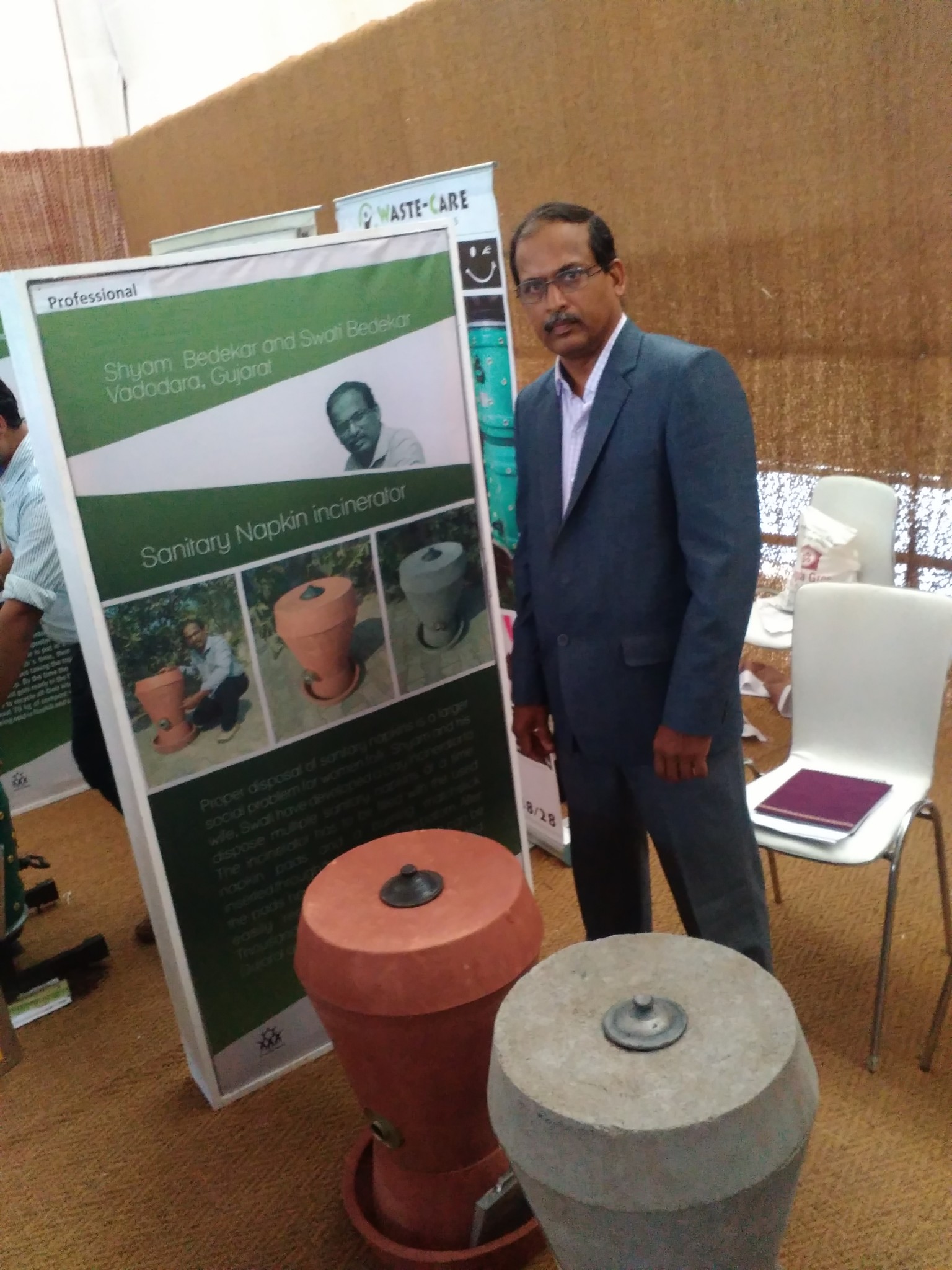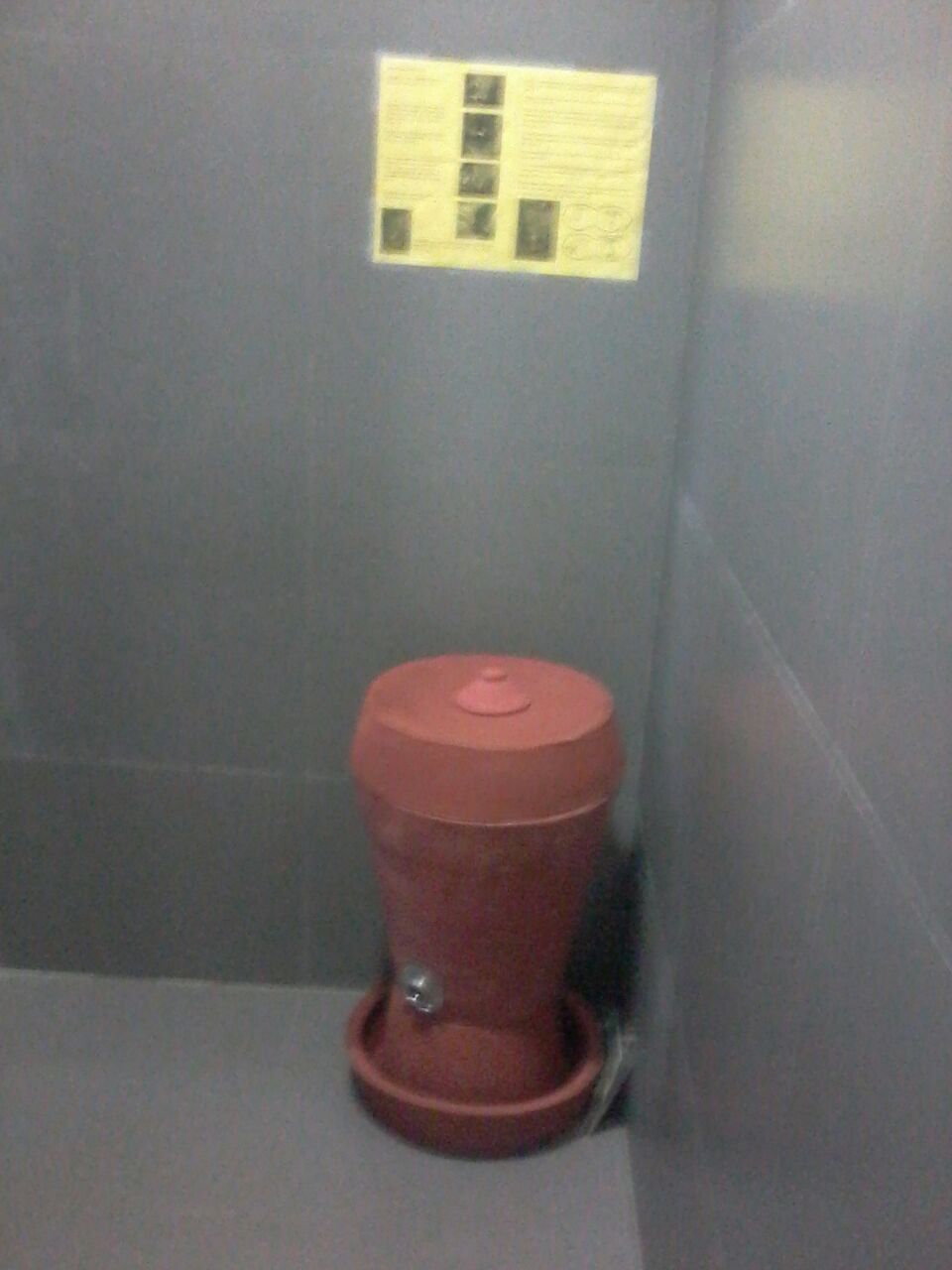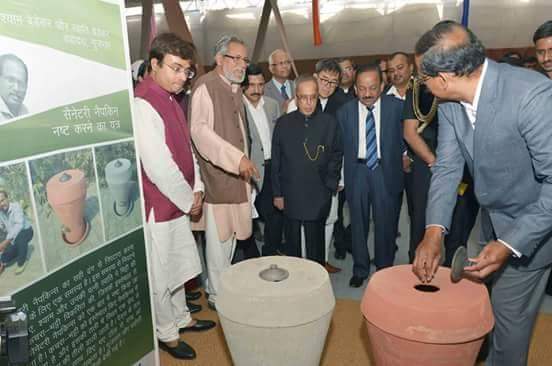How Can Women Dispose Sanitary Napkins? This Man Has an Eco-Friendly Solution!
Shyamsunder Bedekar from Gujarat has come up with a brilliant innovation which has the potential to change many lives in rural India. A low cost sanitary napkin incinerator, which he calls the Ashudhdhinashak, will help numerous women in discarding sanitary napkins in an environment-friendly way. This is how it came into existence.

Shyamsunder Bedekar from Gujarat has come up with a brilliant innovation which has the potential to change many lives in rural India. A low cost sanitary napkin incinerator, which he calls the Ashudhdhinashak, will help numerous women in discarding sanitary napkins in an environment-friendly way. This is how it came into existence.
Why would a man be even remotely concerned about what happens to soiled sanitary napkins? And why would he use his innovative mind to resolve the vexed issue of disposing sanitary napkins in a clean and environmentally safe manner? Especially considering the fact that he himself will hardly benefit from the findings in any direct way!
Meet Shyamsunder Bedekar, an innovator from Vadodara, Gujarat, who decided to solve the disposal issue of soiled or used sanitary napkins, and came up with his brilliant innovation – the “Ashudhdhinashak”.
It all began by chance
53-year-old Shyam has a B.Sc. in Chemistry and a B.Sc. Tech degree in Textile Chemistry. He began working as a quality control head, first with textile mills and later with dyestuff manufacturing units.
Shyam’s wife, Swati, a science educator, used to address the issue of menstrual hygiene by creating enterprises consisting of tribal women who manufactured low cost, yet high quality sanitary napkins. Though her work helped women maintain menstrual hygiene and also earn in the process, the issue of safe disposal of sanitary napkins had to be resolved. Shyam could see the predicament that Swati was going through. And it was his innovative thinking that came to her rescue. Shyam realized that there was a need to develop a low-cost incinerator for disposal of sanitary napkins, especially for rural areas where there is no system of garbage collection like in cities. If the disposal aspect was taken care of, it would become easier to convince women to use sanitary napkins.
Design Considerations
As the first step, Shyam created a vision for the incinerator. It had to be low cost and required work on three major aspects – technical, commercial, and aesthetics.
Understanding that the technical aspects had to be given the maximum weightage, Shyam focused on the combustion action of the incinerator. He also worked on the accumulation chamber that would hold 5 to 20 soiled sanitary napkins. The protection aspects, like reducing attacks by rodents and ants, were also looked into.
Then came the question of materials – wood was out of question; steel is too expensive, is not rust proof and has a high chance of being stolen. After toying with multiple ideas, Shyam decided to design the incinerator with terracotta and concrete.
How does it Work?
Shyam created a sub compartment in the accumulation chamber. This accumulation chamber rests on a mesh. The mesh is big enough to allow the ash to fall down, but small enough to restrict rodents from entering. The sub compartment primarily aids the ignition process. The hole allows oxygen to enter the chamber, thereby sustaining the burning process.
Step 1: A woman opens the top lid and throws soiled sanitary napkins into the accumulation chamber. She does not have to touch or look inside the chamber.
Step 2: She uses either dry grass or paper to ignite.
Step 3: The soiled sanitary napkins burn out. Ash falls at the bottom.
Step 4: There is a need to clear the ash. This ash can be used as a fertilizer since the burnt material is wood pulp.
The base of the incinerator is filled with water to provide stability and to keep the ants and rodents at bay. Shyam has also put a lot of thought into the aesthetics of the incinerator, taking special care to make it appear very basic and uninteresting, in an attempt to ensure that it does not attract attention.
The best part is that the incinerator requires no electricity or fuel to keep it operational. Easy to make, easy to assemble and easy to install, Ashudhdhinashak is the innovation that may redefine lives in rural areas.
At the cost of Rs. 2,000 per incinerator, Shyam has been able to install more than 2,000 such machines at universities, hostels, schools that come under Sarva Shiksha Abhiyan (SSA), and in villages near water points.
Recognition
Between 7th and 13th March 2015, Shyam was invited by the National Innovation Foundation (NIF) to present Ashudhdhinashak incinerator at the Festival of Innovations. It was held at Rashtrapati Bhavan. While Shyam has many more innovations to his credit, including a roti/papad maker, a pesticide pump, etc., it is Ashudhdhinashak that perhaps has the potential to change the face of rural India.
Know more in a video here:
How Can Women Dispose Sanitary
Napkins? This Man Has an EcoFriendly
Solution!Posted by TheBetterIndia on Sunday, June 19, 2016
To connect with Shyam, you can write to him at [email protected] or call him at +91 9824074940.
Like this story? Or have something to share? Write to us: [email protected], or connect with us on Facebook and Twitter (@thebetterindia).

Similar Story

Startup’s Innovation Could Help Millions Get Access to Better Brain Health At Home
Ivory, a pioneering age-tech startup founded by Issac John and Rahul Krishnan, aims to redefine the ageing experience by focusing on better brain health, through neuroscience-backed assessments, interactive games, and personalised solutions.
Read more >
If you found our stories insightful, informative, or even just enjoyable, we invite you to consider making a voluntary payment to support the work we do at The Better India. Your contribution helps us continue producing quality content that educates, inspires, and drives positive change.
Choose one of the payment options below for your contribution-
By paying for the stories you value, you directly contribute to sustaining our efforts focused on making a difference in the world. Together, let's ensure that impactful stories continue to be told and shared, enriching lives and communities alike.
Thank you for your support. Here are some frequently asked questions you might find helpful to know why you are contributing?


This story made me
-
97
-
121
-
89
-
167















